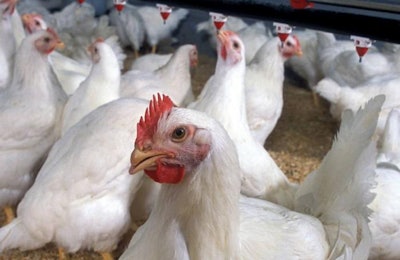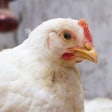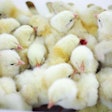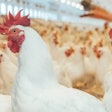
Various scientific disciplines need to be brought to bear if good poultry gut health is to be achieved in a commercial setting. Improving poultry gut health may need to take a new direction, with nutrition playing only part of an overall strategy that combines the latest findings from the fields of feed technology and husbandry management.
In addition, advances in human health and nutrition may offer a growing number of approaches that can be applied to the improvement of broiler and layer gastrointestinal health.
At the 20th European Symposium on Poultry Nutrition, held in Prague, Czechoslovakia, this year, delegates were told that, since the ban on antibiotic growth promoters (AGPs) in the European Union, there has been a search for alternatives to improve health, immune status and performance in poultry and wider animal production.
The focus of this search has been on developing solutions that mimic the effects of AGPs, yet AGPs' exact mode of action in improving poultry performance is not fully understood, which raises questions over how successful this strategy can really be.
Most AGP alternatives try to prevent the proliferation of pathogenic bacteria and to modulate indigenous bacteria to improve immune status and performance, but progress in finding substitutes has, to date, only been limited.
“As part of a stable ecological system, pathogens per se do not represent a threat to animal health. The dynamic nature of the gastrointestinal microflora in chickens makes maintaining the right balance in the microbial ecosystem quite challenging,” said Aire Kies, manager of applied R&D EMEA with DSM Nutritional Products – Animal Nutrition and Health.
Speaking at Gut health in poultry: lessons learned from and animal physiology, organized by DSM as part of the symposium, he continued that, despite much scientific work having been done on the topic, a lack of consistent improvement has been registered.
“To improve gut health more consistently, a broader approach, involving a combination of nutrition, feed technology and husbandry management, needs to be taken.
“In addition, gut health is too complex to be solved from only one point of view. Input should be obtained from different disciplines, including food technology, human nutrition, veterinary and human medical sciences,” he continued.

Various scientific disciplines need to be brought to bear if good poultry gut health is to be achieved in a commercial setting.
Relevance of human health
To improve poultry health, discoveries in human health can also offer valuable lessons.
Jan Sikkema, director of the Center for Development and Innovation at the University Medical Center Groningen, examining the relevance of research into the human gut for poultry health, continued that advanced biotechnical techniques had allowed good progress in human gastrointestinal tract research to help in uncovering the intricate interactions between the epithelial barrier of the gut, the immune system, the liver and the microbiota.
“Host-microbe interactions appear to play an important role in several diseases within humans, including obesity, diabetes, certain types of cancer and CVD,” he explained. “These results are finding new application in poultry health and nutrition.”
Nutrigenomics and nutrigenetics
Nutrigenomics is the study of the impact of nutrition on gene activity and its effects on the expression of phenotypes – health, gut functionality, carcass or meat quality, while nutrigenetics is the study of the genetic determinants of the variability of individual responses.
The study of the interactions between genetics and nutrition has long been of interest, but has gained new impetus with the development of high-throughput genomic approaches.
A better understanding of the mechanisms by which nutrition affects gene activity will allow the proposal of new nutritional strategies to guide phenotypes, explained Michel Jacques Duclos, director of the Unite de Recherches Avicoles with the French National Institute for Agriculture and Research (INRA).
He continued that research in the field of nutrigenetics was still emerging in the livestock sector but that, with time, the tools of nutrigenetics would predict the potential of adaptation of genotypes to various feeds.
Together, nutrigenetics and nutrigenomics should permit the identification of the master genes that control the various phenotypes.
Improving gut health in poultry more consistently
To improve poultry gut health, a holistic approach needs to be taken at farm level, including:
- Farm management
- Genetics
- Quality day-old chicks
- Feed
-
Feeding schedule
- Quantity
- Form (particle size; mash vs. pellets)
- Composition (feedstuffs, level)
- Additives
















